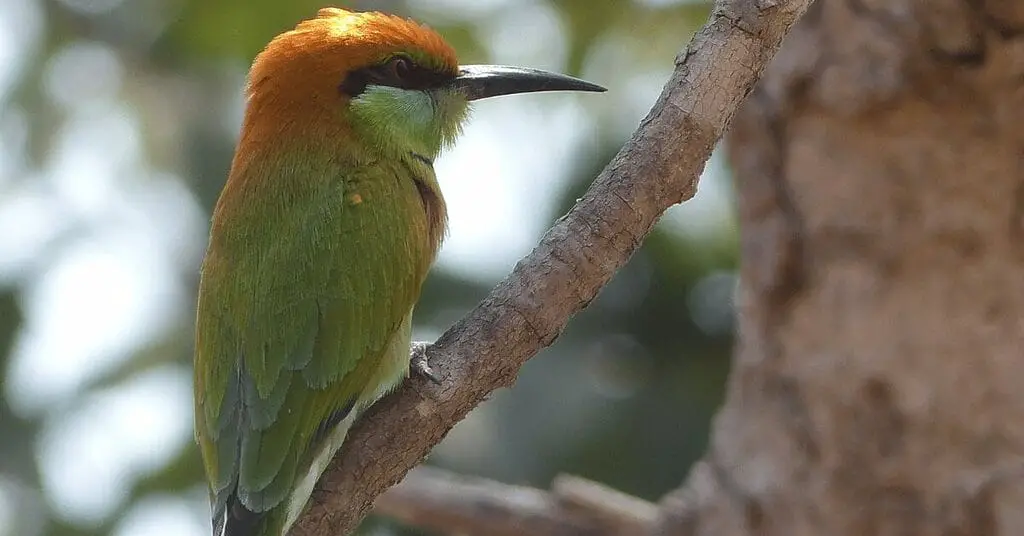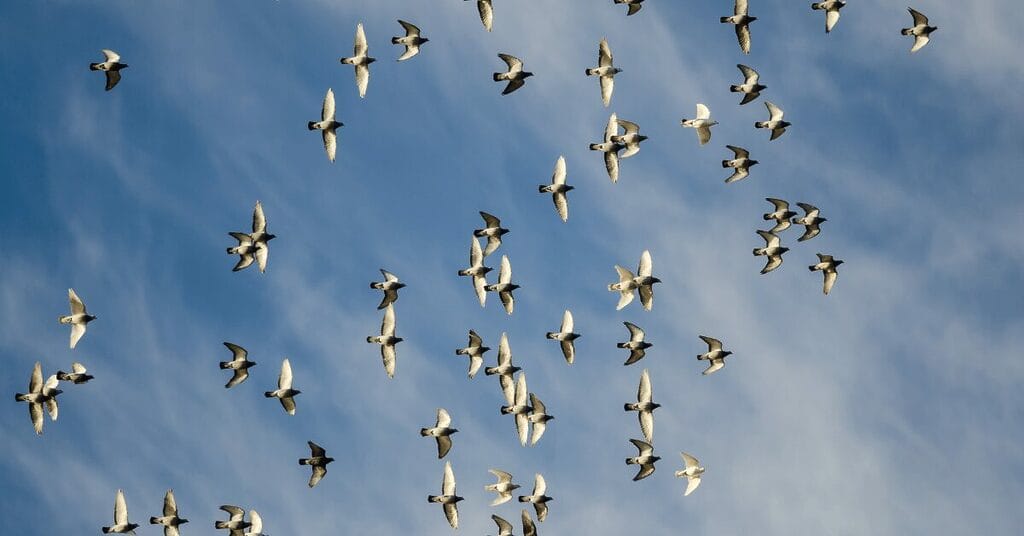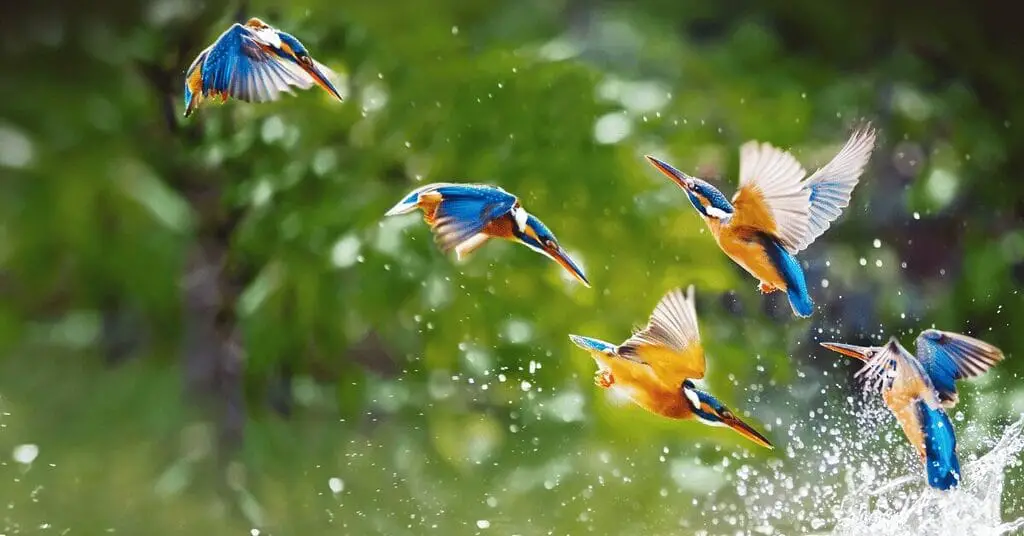Are you fascinated by the colorful feathers, melodic songs, and captivating behaviors of birds? Bird watching is a rewarding hobby that allows you to connect with nature and appreciate the incredible diversity of avian life. However, getting started with bird watching can be overwhelming, especially when you’re unsure where to begin or how to identify different species.
That’s where The Ultimate Guide to Bird Watching and Appreciation comes in. This comprehensive guide is designed to help you unlock the secrets of the bird world, whether you’re a beginner or an experienced birder looking to expand your knowledge.
In this guide, we’ll take you on a journey from the green wetlands of Cambodia to the most iconic bird watching destinations around the globe. You’ll learn about fascinating bird species, learn about their unique behaviors, and gain valuable tips on how to observe them in their natural habitats.
Cambodia: A Bird Watcher’s Paradise

Located in the heart of Southeast Asia, Cambodia is a true paradise for bird enthusiasts. With its diverse landscapes, ranging from lush forests to expansive wetlands, the country boasts an impressive array of avian species that will appeal to both novice and experienced birders alike.
Cambodia’s rich bird diversity is truly remarkable, with over 600 species recorded within its borders. From the impressive Giant Ibis, the country’s national bird, to the rare White-winged Duck, Cambodia offers a unique opportunity to observe some of the world’s rarest and most fascinating birds in their natural habitats.
One of the most iconic bird watching destinations in Cambodia is the Tonle Sap Lake, the largest freshwater lake in Southeast Asia. This vast wetland is home to an incredible number of waterbirds, including the spot-billed pelican, oriental darter, and the critically endangered Bengal florican.
Witnessing these magnificent creatures in real life is an unforgettable experience that will leave you in wonder of nature’s beauty.
For those seeking a more immersive bird watching experience, the Prek Toal Core Bird Reserve is a must-visit destination. Located within the Tonle Sap Biosphere Reserve, this protected area is home to some of the largest waterbird colonies in Southeast Asia.
Here, you can observe a wide range of species, such as the greater and lesser adjutants, the black-headed ibis, and the painted stork, as they nest and forage in the surrounding flooded forests.
If you’re planning a trip to Cambodia, be sure to include Siem Reap in your itinerary. Not only is this city famous for its ancient temples, but it also serves as a gateway to some of the best bird watching spots in the country.
From the Ang Trapaeng Thmor Sarus Crane Reserve to the Phnom Kulen National Park, there are plenty of opportunities to spot a wide variety of birds, including the red-headed vulture, the green peafowl, and the black-shanked douc langur.
For the best bird watching experience in Cambodia, it’s essential to plan your itinerary carefully. Fortunately, there are numerous bird watching sites and tours available throughout the country, catering to different interests and skill levels.
Whether you prefer a guided tour or a self-guided adventure, you’ll find plenty of resources to help you discover the incredible diversity of Cambodia’s avian world.
Unique and Interesting Bird Species
One fascinating group of birds that often captures the attention of bird enthusiasts is the diverse array of black birds. From the common raven to the lesser-known black-bellied whistling duck, these birds can be found across the globe, each with its own unique characteristics and behaviors.
Discovering the different types of black birds and learning about their ecological roles can add an exciting new dimension to your bird watching experience.
Hummingbirds, native to the Americas, are another group of birds that never fail to fascinate observers with their tiny size, vibrant colors, and incredible aerial abilities. In North America alone, there are over 20 species of hummingbirds, each with its own unique characteristics and preferred habitats.
From the red-throated hummingbird to the black-chinned hummingbird, these tiny birds are a delight to watch as they hover, feed, and interact with their surroundings.
Also, let’s not forget about the charming and beloved bluebirds. While many people are familiar with the eastern bluebird, there are actually several types of bluebirds found throughout North America, each with its own unique appearance and habitat preferences.
From the mountain bluebird to the western bluebird, learning to identify and appreciate these different species can add a new level of enjoyment to your bird-watching experiences.
Fascinating Bird Facts and Behaviors

One of the most fascinating aspects of bird biology is the color of their eggs. While most birds lay eggs in shades of white, brown, or speckled patterns, some species have evolved to produce eggs with a striking green hue. The Cassowary, Emu, and Whimbrel are among the few birds known to lay green eggs.
This unique coloration is believed to provide protection in their specific habitats, helping to protect the eggs from potential predators. The green color, known as biliverdin, is derived from the breakdown of hemoglobin in the bird’s bloodstream and is deposited on the eggshell during formation.
Interestingly, the intensity of the green color can vary depending on the bird’s diet and overall health. The process of egg coloration is a fascinating example of natural adaptation. In some cases, the color of the eggs may serve as a signal to the parents, indicating the quality and health of the baby inside.
While most birds are active during the day, some species have evolved specialized adaptations that allow them to navigate and hunt in low-light conditions.
Owls are perhaps the most well-known nocturnal birds, with their large, forward-facing eyes that provide excellent depth perception and the ability to locate prey in the dark.
Their feathers are also adapted for silent flight, with soft, serrated edges that minimize turbulence and allow them to swoop down on unsuspecting prey without being detected. This silent flight adaptation is particularly important for owls, as it allows them to hear the faint sounds of their prey moving on the ground below.
Nightjars, another group of nocturnal birds, have large mouths and hair around their beaks, which help them catch insects in mid-air during their nocturnal foraging flights.
These birds are often heard before they are seen, with their unique calls and wing-clapping displays echoing through the night sky. Kiwis, the national symbol of New Zealand, are another fascinating example of nocturnal birds.
These flightless birds have evolved to occupy a unique ecological niche, using their long beaks to probe the soil for invertebrates and their keen sense of smell to locate food in the dark.
The adaptations of nocturnal birds extend beyond their physical characteristics. Many of these species have evolved specialized behaviors and social structures that allow them to thrive in the dark.
For example, some owl species engage in cooperative hunting, with one individual flushing out prey while another swoops in for the kill.
Other nocturnal birds, such as the Whip-poor-will, have developed elaborate courtship rituals that involve aerial displays and vocalizations performed under the cover of darkness.
Top Bird Watching Destinations Worldwide

As we expand our knowledge beyond the fascinating facts and behaviors of birds, let’s go on a virtual journey adventure to discover some of the world’s top bird watching destinations.
From the tropical rainforests of South America to the vast savannas of Africa, each continent offers unique and thrilling opportunities for bird enthusiasts to observe and appreciate the incredible diversity of avian life.
North America
North America has an impressive array of bird watching hotspots, with iconic locations such as the Rio Grande Valley in Texas, renowned for its diverse population of birds, including the colorful Green Jay and the elusive Hook-billed Kite.
The Everglades National Park in Florida is another must-visit destination, home to a wide variety of wading birds, such as the Roseate Spoonbill and the Wood Stork, as well as the majestic Snail Kite.
South America
Traveling south to the vibrant landscapes of South America, bird watchers can explore the incredible biodiversity of the Amazon rainforest, where species like the brilliant Scarlet Macaw and the peculiar Hoatzin can be found.
The Andes Mountains, stretching from Colombia to Argentina, offer a chance to spot high-altitude specialists, such as the Andean Condor and the Sword-billed Hummingbird, known for its exceptionally long beak.
Europe
Europe may be smaller in size compared to other continents, but it certainly doesn’t lack in bird watching opportunities. The Danube Delta in Romania is a wetland paradise, hosting a vast array of waterbirds, including the striking Dalmatian Pelican and the elegant Great White Pelican.
The Camargue in southern France is another top destination, famous for its flamingo colonies and a wide variety of waders and seabirds.
Africa
Africa’s bird watching scene is nothing short of impressive, with the continent’s diverse habitats supporting an incredible array of species. The Okavango Delta in Botswana is a wildlife haven, offering a chance to spot the majestic African Fish Eagle, the colorful Lilac-breasted Roller, and the elusive Pel’s Fishing Owl.
The Bwindi Impenetrable National Park in Uganda is a prime location for observing the rare and endangered Mountain Gorilla, as well as a host of forest bird species, such as the striking Black Bee-eater and the cryptic African Green Broadbill.
Asia
Asia’s bird watching destinations are equally impressive, with the tropical rainforests of Borneo hosting an incredible diversity of species, including the unique Rhinoceros Hornbill and the diminutive Oriental Dwarf Kingfisher.
The Western Ghats in India are a biodiversity hotspot, home to a wide range of endemic bird species, such as the Malabar Trogon and the White-bellied Treepie.
Australia and Oceania
Australia and Oceania offer a chance to observe some of the world’s most unique and fascinating bird species.
Kakadu National Park in Australia’s Northern Territory is a haven for bird watchers, with species like the impressive Brolga and the colorful Rainbow Bee-eater.
New Zealand’s Tiritiri Matangi Island is a predator-free sanctuary, providing a safe haven for rare and endangered species, such as the flightless Takahe and the curious Kiwi.
By exploring these top bird watching destinations worldwide, bird enthusiasts can immerse themselves in the incredible diversity and beauty of avian life across the globe.
Each location offers a unique opportunity to observe and appreciate the remarkable adaptations and behaviors of birds in their natural habitats, creating a deeper connection with and understanding of these fascinating creatures.
Getting Started with Bird Watching

If you’re eager to get started on your bird watching journey but don’t know where to begin, fear not! With a few essential tools and some basic knowledge, you’ll be well on your way to enjoying this rewarding hobby.
Essential Equipment
To get started, you’ll need a few key pieces of equipment. A good pair of binoculars is crucial for observing birds from a distance without disturbing them. Look for binoculars with a magnification of 8x to 10x, which will provide a good balance between magnification and field of view.
A field guide or bird identification app is also essential, as it will help you identify the species you encounter. Consider investing in a sturdy, comfortable backpack to carry your gear, as well as a hat and sunscreen for protection from the sun during longer outings.
Identifying Birds
One of the most exciting aspects of bird watching is learning to identify different species. Start by familiarizing yourself with the most common birds in your area, paying attention to their size, shape, color patterns, and distinctive features.
Take note of their behavior, such as how they fly, feed, and interact with their environment. Listen carefully to their calls and songs, as these can be key to identifying birds even when they’re hidden from view. With practice and patience, you’ll soon be able to recognize a wide variety of species.
Birding Ethics and Guidelines
As you step into the world of bird watching, it’s essential to follow proper birding ethics and guidelines to ensure the safety and well-being of the birds and their habitats. Always maintain a respectful distance from birds, avoiding any actions that may cause them stress or disrupt their natural behaviors.
Stay on designated trails and paths to minimize your impact on the environment, and refrain from using recordings or other methods to attract birds, as this can interfere with their normal activities.
Be mindful of your surroundings and the presence of other birders, and always obtain necessary permits or permissions when birding on private or restricted lands.
Resources for Bird Enthusiasts
A reliable bird identification guide is an essential tool for any birder. Field guides come in various formats, including books, pocket guides, and even laminated foldouts for easy reference in the field.
Look for guides specific to your region or country, as they will feature the species most likely to be encountered in your area. Renowned guides such as the Sibley Guide to Birds, the Peterson Field Guide series, and the National Geographic Field Guide to the Birds of North America are highly recommended for their detailed illustrations, accurate descriptions, and range maps.
Engaging with online bird watching communities and forums is a fantastic way to connect with fellow enthusiasts, share experiences, and learn from experts in the field. Platforms like BirdForum and Birding Pal provide spaces for birders worldwide to discuss sightings, identification tips, travel advice, and conservation efforts.
Many regional and local bird clubs also maintain active online communities through Facebook groups, Twitter feeds, and dedicated websites. These virtual spaces offer opportunities to participate in challenges, photo sharing, and virtual events, fostering a sense of camaraderie and support among birders, even when physically apart.
Conclusion
This ultimate guide has taken us on a remarkable journey through the world of birds, from Cambodia’s rich avian diversity to the fascinating species and behaviors that captivate enthusiasts worldwide.
We’ve explored top birding destinations, essential equipment, identification techniques, and the wealth of resources available to support your passion.
As you continue your birding adventure, enjoy the joy of discovery and share your love for these incredible creatures with others. Remember, as bird enthusiasts, we have a unique opportunity to contribute to conservation efforts and ensure that the wonder of birds endures for generations to come.
